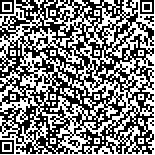| Quote
: |
兰斌,张钰,龙睿,丑天舒.小柴胡汤“去滓重煎”对LPS诱导发热白兔模型体温及血清IL-1β、IL-6和TNF-α水平的影响[J].湖南中医药大学学报英文版,2020,40(12):1468-1472.[Click to copy
] |
|
| |
|
|
| This paper
:Browser 2429times Download 1284times |
| 小柴胡汤“去滓重煎”对LPS诱导发热白兔模型体温及血清IL-1β、IL-6和TNF-α水平的影响 |
| 兰斌,张钰,龙睿,丑天舒 |
| (湖南中医药大学, 湖南 长沙 410208) |
| 摘要: |
| 目的 观察小柴胡汤“去滓重煎”对脂多糖(lipopolysaccharides,LPS)诱导发热新西兰兔模型体温及血清白细胞介素1β(interleukin-1β,IL-1β)、白细胞介素6(interleukin-6,IL-6)和肿瘤坏死因子α(tumor necrosis factor-α,TNF-α)水平的影响。方法 通过新西兰兔耳缘静脉注射0.6 μg·kg-1剂量的LPS诱导发热模型;将造模成功后的新西兰兔随机分为模型组、小柴胡汤原液组、小柴胡汤“去滓重煎”组和阿司匹林组,另加正常对照组,共计5组,每组10只,再分别给予小柴胡汤原液、小柴胡汤“去滓重煎”液、阿司匹林水溶液和同等体积生理盐水灌服5 mL,每隔30 min测定体温(T1),连续测量120 min,计算体温变化值△T。待最后1次体温测量后,采用ELISA法测定各组新西兰兔血清IL-1β、IL-6及TNF-α水平;用血细胞检测分析仪检测白细胞和嗜中性粒细胞数量。结果 与模型组相比,小柴胡汤原液组和小柴胡汤“去滓重煎”组新西兰兔体温均显著低于模型组(P<0.05),血清中IL-1β、IL-6和TNF-α含量均下降(P<0.05),白细胞和嗜中性粒细胞数目均有所降低(P<0.05或P<0.01);与小柴胡汤原液组比较,小柴胡汤“去滓重煎”组在1.5 h和2 h时间节点体温低于小柴胡汤原液组(P<0.05),且血清IL-1β、IL-6和TNF-α含量均低于小柴胡汤原液组(P<0.05),但白细胞和嗜中性粒细胞数目差异无统计学意义(P>0.05)。结论 小柴胡汤“去滓重煎”液能显著降低LPS诱导的新西兰兔发热模型体温,且在1.5 h和2 h时间节点的解热疗效优于小柴胡汤原液,可能与其降低血清IL-1β、IL-6和TNF-α含量效果优于小柴胡汤原液有关。 |
| 关键词: 发热 小柴胡汤 去滓重煎 脂多糖 炎性因子 |
| DOI:10.3969/j.issn.1674-070X.2020.12.006 |
| Received:May 18, 2020 |
| 基金项目:湖南省教育厅一般项目(18C0365);湖南中医药大学2017年度校级科研基金项目(99820001020)。 |
|
| Effects of Xiaochaihu Decoction After “Deslagging and Re-Boiling” on Body Temperatures and Serum Levels of IL-1β, IL-6 and TNF-α in LPS-Induced Fever Model White Rabbits |
| LAN Bin,ZHANG Yu,LONG Rui,CHOU Tianshu |
| (Hunan University of Chinese Medicine, Changsha, Hunan 410208, China) |
| Abstract: |
| Objective To observe the effects of Xiaochaihu Decoction after "deslagging and re-boiling" on body temperature and serum levels of IL-1β, IL-6 and TNF-α of LPS-induced fever white rabbit. Methods The fever model was induced by the intravenous injection of 0.6 μg·kg-1 dose of LPS in the ear margin of New Zealand rabbits. After successful modeling, the New Zealand rabbits were randomly assigned into a model group, a Xiaochaihu Decoction group, a Xiaochaihu Decoction after "deslagging and re-boiling" group and an aspirin group, and a normal group, with 10 rabbits in each group. 5 mL of Xiaochaihu Decoction, Xiaochaihu Decoction after "deslagging and re-boiling", aspirin solution and normal saline with same volume were infused, and the body temperature (T1) was measured every 30 min. The temperature was continuously measured for 120 min and the body temperature was calculated Change value △T (△T=T1-T0). After the last temperature measurement, the levels of IL-1β, IL-6 and TNF-α in New Zealand rabbit serum of each group were determined by ELISA. The number of white blood cells and neutrophils was detected with a blood cell detection analyzer. Results Compared with the fever model, the body temperature of New Zealand rabbits in the Xiaochaihu Decoction group and the Xiaochaihu Decoction after "deslagging and re-boiling" group were significantly lower than those in the fever model group (P<0.05). The levels of IL-1β, IL-6 and TNF-α in serum decreased (P<0.05), and the number of white blood cells and neutrophils decreased (P<0.05 or P<0.01). Compared with the Xiaochaihu Decoction group, the body temperature of the Xiaochaihu Decoction after "deslagging and re-boiling" group was lower than that of the Xiaochaihu Decoction group at 1.5 and 2 hours (P<0.05). The levels of serum IL-1β, IL-6 and TNF-α were all lower than the Xiaochaihu Decoction group (P<0.05), but there was no statistically significant difference in the number of white blood cells and neutrophils (P>0.05). Conclusion The Xiaochaihu Decoction after "deslagging and re-boiling" can significantly reduce the body temperature of New Zealand rabbit fever model induced by LPS, and its effects of relieving fever is better than Xiaochaihu Decoction at 1.5 h and 2 h, which might be related to the better effect of reducing content of IL-1β, IL-6 and TNF-α than Xiaochaihu Decoction. |
| Key words: fever Xiaochaihu Decoction deslagging and re-boiling lipopolysaccharide inflammatory factor |
|

二维码(扫一下试试看!) |
|
|
|
|


